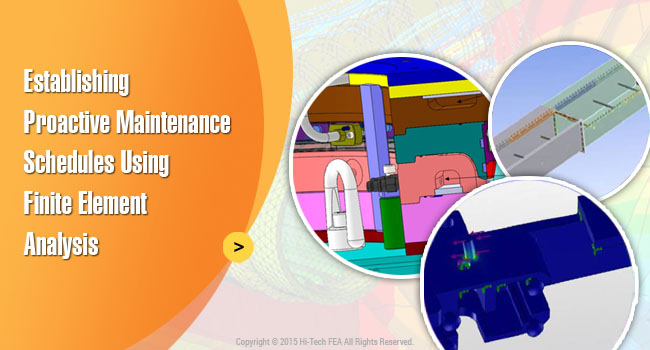Establishing Proactive Maintenance Schedules Using Finite Element Analysis
Posted by Bhaumik Dave on June 25th, 2015
Any engineered product’s success rate hugely depends on the amount of useful life it delivers. As conventional designs continue evolving for the sake of improving performance, it has become mandatory for design engineers to adopt new ways to determine and increase product life, while downsizing and reducing the development cost.

The use of finite element analysis is as such being increasingly adopted by engineers to evaluate the product virtually, prior to making any change in the design. The use of simulation helps in determining key design parameters that affect the performance and life of the product, which can be improved further to ensure a longer lasting product. Since the number of physical tests can be reduced, the cost of making a safe design is also nominal.
However, the simultaneous results obtained through FEA can also be utilized to determine the warranty and maintenance costs for equipments and helps in establishing proactive maintenance schedules effectively.
Some of the highlights of using FEA to establish maintenance schedules are discussed below:
- Supportive components such as bolts, brackets, etc. can be evaluated for stress and failure criteria can be decided. This helps in identifying the periodic replacement required prior to any catastrophic failure.
- Products undergoing cyclic loading applications can be evaluated for fatigue safety and the period of useful life can be evaluated.
- Vibration analysis can help in predicting product’s response to vibration frequencies that can cause the equipments to fail prematurely. Determining the effect of the vibrations on the structure can provide clear perspective on improving the strength of the support frame as well as determine inspection intervals.
- Examining the product for maximum stress and deformation using structural analysis can provide the ability to determine warranty period for that particular product design more effectively.
- The ability to predict the product behavior can help take proactive measures, especially when dealing with equipments utilized in power plant, oil & gas and nuclear industries.
Virtual simulations as such can prove to be highly beneficial in developing an overall product development and marketing strategy. The downsizing of the products and the ability to predict maintenance and warranty costs can help in placing the product in the market more confidently.
Moreover, the product’ safety can be comprehensively determined through multiple failure simulations, providing design engineers to figure out possible failure conditions and take proactive actions just when there is a need.


